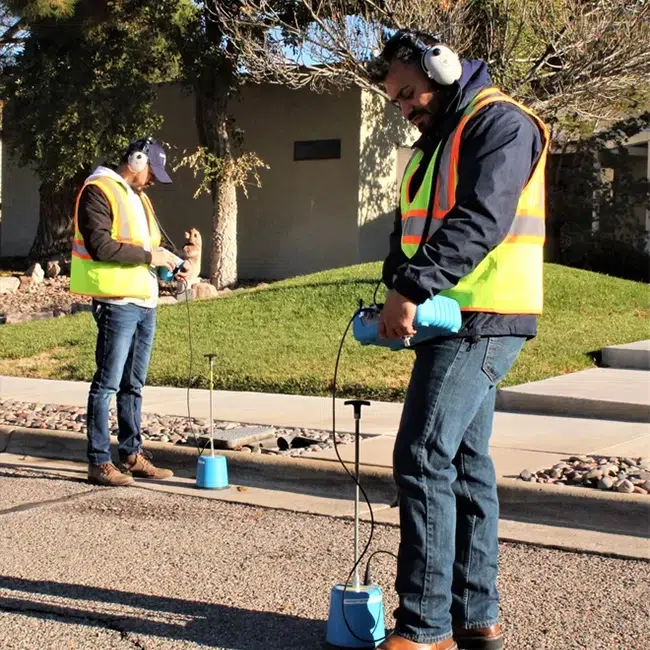Just How Professional Water Leak Detection Can Save You Money and Stop Damages
Just How Professional Water Leak Detection Can Save You Money and Stop Damages
Blog Article
Ingenious Solutions for Early Discovery of Water Leaks in Buildings and Framework
As the stability of structures and facilities is critical, the obstacle of early discovery of water leaks has stimulated innovative remedies that guarantee to revolutionize the means we protect versus prospective problems. From innovative leakage detection modern technologies to the deployment of IoT sensing units for real-time monitoring, the landscape of leak prevention is progressing swiftly. Device understanding algorithms supply a peek right into the future of leak forecast, while thermal imaging offers a non-intrusive technique for determining covert leaks. Automated water flow evaluation systems are reshaping just how leakages are determined and addressed, leading the way for a positive technique to water leakage discovery. Each of these options holds the vital to ensuring the reliability and long life of our built environment, triggering a change in the direction of an extra lasting and efficient future.
Advanced Leak Discovery Technologies
Advanced leak discovery modern technologies, equipped with cutting-edge sensing units and formulas, play an essential role in swiftly recognizing and determining water leakages in different setups. These innovations employ a combination of acoustic, thermal, and electro-magnetic picking up approaches to identify leakages precisely. Acoustic sensors spot the sound of running away water, enabling specific localization of the leakage resource. Thermal imaging finds temperature level modifications triggered by water leakage, offering one more efficient technique for leakage recognition. Electro-magnetic sensors can identify modifications in electro-magnetic areas triggered by water, supplying yet an additional layer of leakage discovery ability.

IoT Sensors for Real-Time Monitoring
In the realm of modern-day water leakage detection, the combination of IoT sensors for real-time monitoring stands for a pivotal development in boosting proactive leak discovery capabilities. These sensing units supply continuous monitoring of water supply, giving real-time data on water circulation prices, stress variations, and temperature modifications. By leveraging IoT modern technology, these sensors can identify even the tiniest abnormalities in water use patterns, making it possible for early identification of prospective leaks before they intensify right into significant issues.
IoT sensors transfer data to a centralized platform, where innovative algorithms examine the info and generate notifies or notices when irregularities are identified. This real-time tracking ability enables property proprietors or center supervisors to immediately deal with leaks, reducing water damage, lowering fixing expenses, and saving water resources.
Furthermore, IoT sensing units can be incorporated with structure administration systems, allowing for automatic reactions to spotted leaks, such as closing off water shutoffs or turning on pumps to alleviate the effect of leaks. On the whole, the application of IoT sensors for real-time surveillance dramatically improves the effectiveness and effectiveness of water leakage detection in structures and facilities.
Artificial Intelligence Algorithms for Leak Prediction

One secret view it now advantage of making use of artificial intelligence for leak forecast is its capacity to constantly learn and boost its precision in time. As more information is collected and fed into the algorithm, it can improve its predictions and adapt to altering conditions, inevitably boosting the reliability of leakage discovery systems.
Moreover, artificial intelligence algorithms can aid in determining subtle indications of leaks that might go unnoticed by typical tracking approaches. water leak detection. By examining complex information embed in real-time, these formulas can offer very early warnings and informs, enabling prompt intervention and preventative maintenance to minimize potential water damages and associated expenses
Making Use Of Thermal Imaging for Leak Discovery
Thermal imaging technology provides an appealing technique for detecting water leaks in different systems and frameworks. By making use of infrared radiation and temperature level differences, thermal imaging cameras can identify hidden leaks that are not easily visible to the nude eye.
Among the essential advantages of thermal imaging for leakage detection is its non-intrusive nature. Unlike standard approaches that might require getting into wall surfaces or floors to find leaks, thermal imaging enables for non-destructive testing. This not only saves time and reduces prices yet additionally decreases disturbance to the structure or facilities being examined. Furthermore, thermal imaging can rapidly scan large locations, giving a thorough review of prospective leak sources in a prompt way. Generally, making use of thermal imaging technology boosts the performance and precision of water leakage detection, making it a beneficial device for keeping the stability of buildings and infrastructures.
Automated Water Flow Evaluation Systems
Just how can automatic water flow evaluation systems revolutionize the discovery and management of leakages in different systems and frameworks? Automated water flow evaluation systems provide an aggressive method to leakage detection by continually checking water flow prices and patterns. By establishing standard data, these systems can swiftly determine discrepancies that might indicate a leakage, enabling Related Site timely intervention to avoid substantial damages.
These systems utilize innovative algorithms to examine real-time data and give immediate informs when anomalies are found, allowing for quick activity to be taken. Additionally, automatic water circulation evaluation systems can be integrated with structure monitoring systems or IoT platforms, boosting overall effectiveness and enabling remote surveillance capabilities.
Additionally, the information gathered by these systems can be made use of for predictive maintenance objectives, aiding to identify prospective powerlessness in the framework prior to leakages take place. Generally, the implementation of computerized water circulation analysis systems can significantly enhance leakage discovery and administration techniques, inevitably resulting in cost savings, decreased water wastage, and raised sustainability in buildings and framework.

Final Thought
In final thought, the assimilation of innovative leakage discovery technologies, IoT sensors, artificial intelligence formulas, thermal imaging, and automatic water circulation evaluation systems uses cutting-edge remedies for very early discovery of water leakages in structures and framework. These modern technologies make it possible for real-time surveillance, forecast of leakages, and reliable discovery approaches to protect against water damages and wastefulness. Applying these remedies company website can aid in keeping the honesty and sustainability of water supply in numerous setups.
Report this page